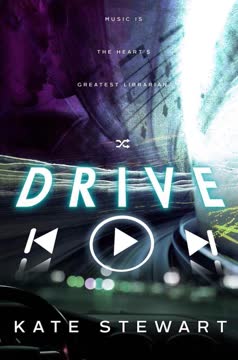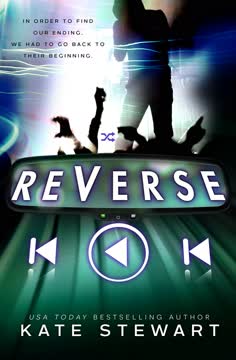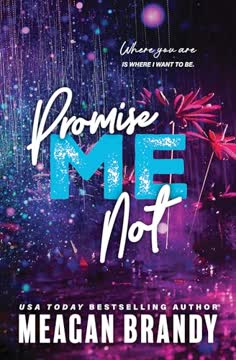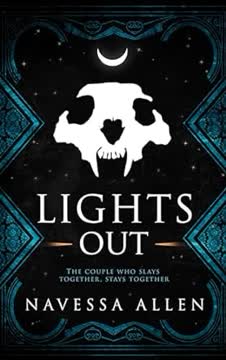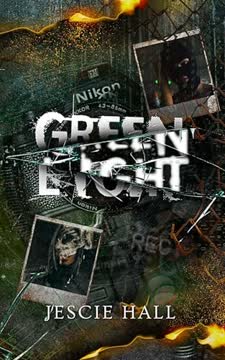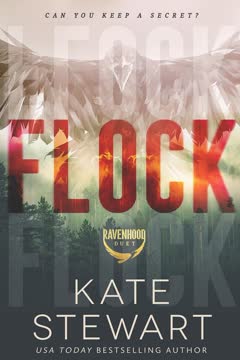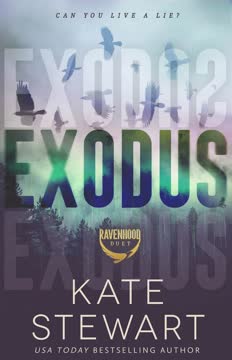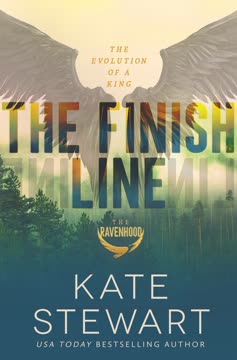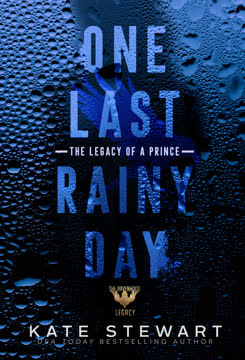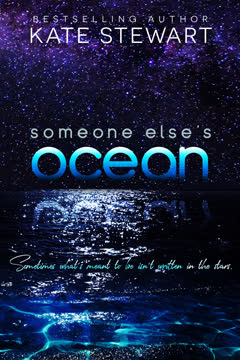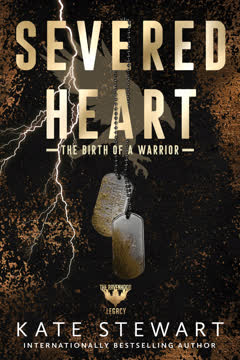Plot Summary
Playlist of a Life
Stella Emerson's life is a mixtape—each memory, heartbreak, and hope is scored by a song. From her earliest days, music is her solace, her language, and her way of making sense of the world. As a passionate, emotional, and sometimes impulsive young woman, Stella's journey is shaped by the rhythms and lyrics that define her. Her story begins with a career-defining interview with elusive rap superstar Titan, but the real soundtrack is her own: a coming-of-age tale set in Austin's vibrant music scene, where every chapter is a new track, and every love, loss, and lesson is underscored by the music that moves her.
The Interview That Changed Everything
Stella's big break comes when she lands an exclusive interview with Titan, the world's most enigmatic rapper. The interview goes viral, catapulting her into the spotlight and validating her dreams of becoming a respected music journalist. But as her professional star rises, her personal life is thrown into chaos. The high of success is quickly tempered by the news that her ex-boyfriend is getting married, sending Stella into a tailspin of old wounds and unresolved feelings. The juxtaposition of career triumph and personal heartbreak sets the tone for the emotional rollercoaster to come.
Heartbreaks and Highways
Unable to face her feelings, Stella impulsively skips her flight home and embarks on a cross-country drive, using music as both escape and therapy. Each song on her playlist becomes a chapter in her emotional journey, forcing her to confront the ghosts of past relationships and the ache of unfinished business. The open road becomes a metaphor for her search for closure, but Stella soon realizes that some wounds can't be outrun—they must be faced head-on, with honesty and vulnerability.
Sisters, Secrets, and Survival
Back in Austin, Stella moves in with her older sister Paige, whose tough love and overprotectiveness both help and hinder Stella's healing. Their relationship is a mix of fierce loyalty and simmering resentment, complicated by secrets, misunderstandings, and the ever-present shadow of their shared past. As Stella struggles to find her footing—personally and professionally—Paige's friendship with Reid, the brooding drummer next door, becomes a source of both comfort and conflict, setting the stage for the tangled love triangle at the heart of the story.
The Drummer Next Door
Reid Crowne is everything Stella shouldn't want: moody, mysterious, and nursing wounds of his own. Their initial interactions are prickly, laced with sarcasm and mutual distrust, but beneath the banter is a crackling chemistry neither can ignore. As Stella gets drawn into Reid's world—a world of late-night jam sessions, struggling garage bands, and dreams deferred—she begins to see the man behind the mask. Their connection deepens, but both are haunted by past heartbreaks and the fear of repeating old mistakes.
Garage Band Dreams
Reid's band, the Dead Sergeants, is on the cusp of something big, but the road to success is littered with setbacks, sacrifices, and self-doubt. Stella becomes their unofficial chronicler, using her writing to champion their music and document their journey. The band's rehearsal space becomes a sanctuary—a place where misfits find belonging, and where music is both escape and salvation. As Stella and Reid's relationship intensifies, so does the pressure: can love survive the demands of ambition, addiction, and the lure of the spotlight?
Love, Loss, and Lyrics
Stella and Reid's romance is passionate, messy, and ultimately unsustainable—at least for now. Both are still healing from old wounds, and their love is as much a source of pain as it is of joy. When Reid's family crisis forces him to leave Austin, Stella is left reeling, her heart shattered but her spirit unbroken. She pours her grief into her writing, using music as a lifeline to pull herself through the darkness. The songs that once brought comfort now sting with memories of what was lost.
The Nate Butler Equation
Enter Nate Butler: Stella's editor, mentor, and eventual lover. Nate is everything Reid is not—steady, supportive, and offering the kind of love that feels safe and sustainable. Their relationship grows from professional respect to deep affection, and for a time, Stella believes she's found her happy ending. But the shadow of her unresolved feelings for Reid lingers, complicating her ability to fully commit. The love triangle becomes a crucible, forcing Stella to confront what she truly wants—and what she's willing to risk to get it.
Torn Between Two Kings
Stella's heart is split between two men: the wild, unpredictable passion she shares with Reid, and the steady, nurturing partnership she builds with Nate. Both relationships offer her something vital, but neither is complete. As the Dead Sergeants achieve stardom and Stella's career flourishes, the tension between past and present, desire and duty, becomes unbearable. When fate brings all three together again, Stella is forced to make a choice that will define the rest of her life.
The Cost of Closure
The fallout from Stella's decision is swift and brutal. Friendships are tested, family bonds are strained, and the pain of loss is almost too much to bear. Both Nate and Reid are left wounded, and Stella must reckon with the reality that loving two people can mean losing both. The journey toward closure is messy and nonlinear, marked by setbacks, regrets, and the slow, painful process of forgiveness—both of others and of herself.
The Song That Saved Me
In the aftermath of heartbreak, Stella turns once again to music for solace and strength. Her writing and podcasting career take off, giving her a new sense of purpose and identity. Through therapy, friendship, and creative expression, she learns to let go of the need for perfect closure and to embrace the beauty of imperfection. The songs that once brought her to her knees now lift her up, reminding her that healing is possible—even after the deepest wounds.
Letting Go, Letting In
Time passes, and Stella's life evolves in ways she never could have predicted. She finds success on her own terms, builds a new home, and learns to love herself as fiercely as she once loved others. Old relationships are redefined, new opportunities arise, and the ghosts of the past are finally laid to rest. When fate brings her and Reid back together, it's not as the broken people they once were, but as two whole individuals ready to write a new song—together.
The Return of the Rockstar
Years after their first, tumultuous romance, Stella and Reid find their way back to each other. Both have grown, healed, and learned the hard lessons of love and loss. Their reunion is not a fairy tale, but a hard-won victory—a testament to the power of forgiveness, resilience, and the belief that some loves are worth waiting for. Together, they build a life rooted in music, mutual respect, and the kind of passion that only comes from having truly lived.
Family, Forgiveness, and Farewells
Stella's journey comes full circle as she reconciles with her family, makes peace with her past, and celebrates the milestones of those she loves. Weddings, births, and bittersweet goodbyes mark the passage of time, but the bonds of love and friendship endure. Stella learns that forgiveness is not a single act, but a lifelong practice—and that true happiness comes from embracing both the joy and the pain of being fully alive.
The Final Encore
As Stella reflects on her journey, she recognizes that every heartbreak, every song, and every choice has led her to this moment. The music that once served as a crutch is now a celebration—a reminder of how far she's come and how much she's grown. Surrounded by friends, family, and the love of her life, Stella takes the stage for her final encore, grateful for the messy, beautiful, and utterly unique story that is hers.
Choosing the Chorus
In the end, Stella's greatest act of courage is choosing herself. She learns that love is not about possession or perfection, but about showing up—again and again—for herself and for those she loves. The chorus of her life is not written by fate, but by the choices she makes every day. With music as her guide and love as her anchor, Stella steps into the future with open arms and an open heart.
The Soundtrack of Forgiveness
Forgiveness—of herself, of Reid, of Nate, and of her family—becomes the final, essential note in Stella's symphony. Through honest conversations, shared memories, and the willingness to be vulnerable, she finds peace with her past and hope for the future. The soundtrack of her life is no longer defined by pain, but by the possibility of joy, connection, and new beginnings.
Home Is a Love Song
Stella's journey ends where it began: with music, love, and the sense of belonging she's always craved. Home is not a place, but a feeling—a song that plays in her heart whenever she's with the people she loves. As she and Reid build a life together, surrounded by friends, family, and the ever-present soundtrack of their shared history, Stella finally understands that the greatest love stories are the ones we write for ourselves.
Characters
Stella Emerson
Stella is a fiercely passionate, deeply emotional woman whose life is defined by her love of music and her relentless pursuit of meaning. She is both impulsive and introspective, often led by her heart rather than her head. Her relationships—with her family, her lovers, and her friends—are intense, complicated, and transformative. Stella's journey is one of self-discovery, as she learns to balance her need for connection with her desire for independence. Her greatest strength is her vulnerability, and her willingness to feel deeply—even when it hurts—ultimately becomes her superpower.
Reid Crowne
Reid is the archetypal tortured artist: a gifted drummer with a troubled past and a heart full of secrets. He is both magnetic and maddening, drawing people in with his talent and pushing them away with his fear of intimacy. Reid's journey is one of redemption, as he battles addiction, family dysfunction, and the ghosts of old heartbreaks. His love for Stella is both his salvation and his undoing, forcing him to confront the parts of himself he'd rather keep hidden. Over time, Reid learns to trust, to forgive, and to believe in the possibility of happiness.
Nate Butler
Nate is Stella's editor, mentor, and eventual lover—a man who offers her the kind of stability and support she's never known. He is intelligent, driven, and deeply caring, but also struggles with his own insecurities and the fear of not being enough. Nate's relationship with Stella is marked by mutual respect, shared ambition, and a genuine friendship that forms the foundation of their romance. Ultimately, Nate's greatest act of love is letting Stella go, trusting that she will find her way—even if it's not with him.
Paige Emerson
Paige is Stella's older sister and occasional nemesis—a woman whose love is expressed through tough talk and practical support. She is fiercely loyal, often to the point of stubbornness, and struggles to balance her desire to protect Stella with her need to let her grow. Paige's own journey is one of learning to trust, to forgive, and to accept that her sister's path may be different from her own.
Lexi
Lexi is Stella's ride-or-die: a fiercely loyal, unapologetically honest friend who provides comic relief, tough love, and unwavering support. She is Stella's mirror and her anchor, always ready with a reality check or a shoulder to cry on. Lexi's own romantic journey parallels Stella's, offering a counterpoint to the main love triangle and highlighting the importance of friendship in weathering life's storms.
Ben
Ben is the lead singer of the Dead Sergeants and a key figure in both Stella's professional and personal life. His charm, talent, and ambition make him a natural leader, but his own struggles with love and loyalty add depth to his character. Ben's relationship with Lexi and his friendship with Reid provide important context for the band's dynamics and the story's central themes.
Adam and Rye
Adam and Rye round out the Dead Sergeants, each bringing their own quirks, talents, and baggage to the group. They serve as both comic relief and emotional ballast, helping to ground the story's more dramatic moments and reminding Stella (and the reader) that family can be found in the most unexpected places.
Stella's Parents
Stella's parents are a source of both comfort and conflict, embodying the complexities of family love. Their support, expectations, and occasional misunderstandings shape Stella's sense of self and her approach to relationships. Their presence in the story underscores the importance of roots, tradition, and the sometimes-painful process of growing up.
Lia
Lia represents the ghosts of Reid's past—the relationships, regrets, and unresolved issues that threaten to derail his happiness. Her presence in the story serves as a reminder that healing is a process, and that true love requires both partners to confront their own demons.
JJ
JJ is Stella's colleague at the Austin Speak, providing both competition and camaraderie. His presence challenges Stella to up her game, to fight for her place in the industry, and to define success on her own terms.
Plot Devices
Music as Emotional Narrative
Music is not just a backdrop in Drive—it is the engine that powers the story. Each chapter is anchored by a song, and the playlist structure mirrors Stella's emotional journey. Songs serve as both memory triggers and emotional touchstones, allowing the reader to experience Stella's highs and lows in real time. This device also provides a unique narrative rhythm, blending past and present, hope and heartbreak, into a seamless whole.
Nonlinear Storytelling and Flashbacks
The novel employs a nonlinear structure, moving fluidly between past and present to reveal the full arc of Stella's journey. Flashbacks are used to provide context, deepen character development, and build suspense. This approach allows the reader to see how Stella's choices—both good and bad—have shaped her, and to appreciate the complexity of her relationships.
Love Triangle and Parallel Journeys
The central love triangle between Stella, Reid, and Nate is more than a romantic subplot—it is a vehicle for exploring themes of identity, agency, and the nature of true love. Each relationship offers Stella something different, and her struggle to choose between them mirrors her larger quest for self-acceptance and fulfillment. The parallel journeys of Lexi and Ben provide additional layers of meaning, highlighting the universality of heartbreak and the importance of friendship.
Symbolism of Home and Belonging
Throughout the novel, the concept of home is both literal and metaphorical. Stella's search for a place to belong—whether in her family, her relationships, or her career—mirrors her internal journey toward self-acceptance. The recurring motif of moving, returning, and building a home underscores the idea that true belonging comes from within.
Foreshadowing and Recurring Motifs
The use of recurring motifs—such as the 23:11 wish, the act of "looking up," and the symbolism of certain songs—serves to foreshadow key events and reinforce the story's central themes. These devices create a sense of inevitability, reminding the reader that life, like music, is a series of repeating patterns and unexpected improvisations.
Analysis
Drive is a raw, immersive exploration of love, ambition, and the healing power of music. Kate Stewart crafts a narrative that is both intensely personal and universally resonant, using the structure of a playlist to mirror the nonlinear, often chaotic journey of self-discovery. The novel's greatest strength lies in its refusal to offer easy answers: Stella's story is messy, her choices are imperfect, and her heart is divided. Yet, through heartbreak, forgiveness, and the courage to keep moving forward, she learns that true fulfillment comes not from finding the perfect partner, but from embracing the full spectrum of her own humanity. Drive is ultimately a celebration of resilience, the redemptive power of art, and the belief that even the most broken hearts can find their way home—one song at a time.
Last updated:
FAQ
0. Synopsis & Basic Details
What is Drive about?
- Music-fueled Self-Discovery: Drive follows Stella Emerson, a passionate and emotionally charged aspiring music journalist, whose life is inextricably linked to the songs that soundtrack her experiences. After a career-defining interview goes viral, Stella's personal life unravels with news of an ex's marriage, prompting an impulsive cross-country drive to escape her heartbreak.
- Austin's Vibrant Music Scene: Settling in Austin, Stella navigates the complexities of living with her overprotective sister, Paige, and unexpectedly finds herself drawn to Reid Crowne, a brooding, talented drummer with a troubled past. The story immerses readers in the raw, exhilarating world of garage bands and the relentless pursuit of artistic dreams.
- Love, Ambition, and Choices: As Stella chases her journalistic ambitions and falls deeply for Reid, their tumultuous romance is tested by his personal demons and family obligations. Later, she finds stability with Nate Butler, her supportive editor, leading to a poignant love triangle that forces Stella to confront her deepest desires and make life-altering choices about love, career, and self-acceptance.
Why should I read Drive?
- Emotional Rollercoaster: Readers seeking a deeply immersive and emotionally intense romance will find Stella's journey captivating. Her raw vulnerability and passionate spirit make her a relatable protagonist, drawing you into every heartbreak and triumph.
- Unique Narrative Structure: The novel's interactive playlist format, with each chapter titled after a song, offers a fresh and engaging reading experience. It allows music to serve as a powerful emotional narrative, enhancing the story's themes of memory, healing, and identity.
- Authentic Music World: For fans of rock and roll and the behind-the-scenes world of aspiring musicians, Drive provides an authentic glimpse into the struggles and triumphs of a garage band. The story celebrates the redemptive power of music and the pursuit of artistic dreams, making it a must-read for music lovers.
What is the background of Drive?
- Austin's Live Music Capital: The story is set against the backdrop of Austin, Texas, renowned as the "Live Music Capital of the World." This vibrant cultural context provides a rich environment for Stella's aspirations as a music journalist and the Dead Sergeants' journey from garage band to rock stars.
- Post-9/11 Cultural Landscape: Nate Butler's backstory, particularly his motivation for journalism stemming from a 9/11 victim's story, subtly grounds the narrative in a post-9/11 world, highlighting themes of human connection and the power of storytelling in the face of tragedy. This adds a layer of depth beyond the romance.
- Interactive Reader Experience: Kate Stewart designed Drive to be an interactive experience, with each chapter title serving as a clickable link to a song on Spotify. This innovative approach directly integrates music into the reading process, reflecting Stella's own deep connection to soundtracks and emotional narratives.
What are the most memorable quotes in Drive?
- "La musica è il più grande bibliotecario del cuore.": This quote, appearing in the Prologue, encapsulates the novel's central theme of music as memory and emotional archive. It highlights how songs serve as powerful conduits to past experiences, shaping Stella's identity and guiding her journey.
- "Un minuto dopo la disperazione, tesoro. Lo prometto. Io ne sono una prova vivente. Credimi, Stella.": Spoken by Reid, this line becomes a mantra for Stella, symbolizing resilience and the belief that hope emerges just beyond rock bottom. It underscores Reid's own journey of overcoming adversity and his enduring faith in Stella's strength.
- "Non ti ho mai dimenticato, Stella. Né te, né noi, niente.": This powerful declaration from Reid, delivered after years of separation, cuts through Stella's doubts and reaffirms the profound, undeniable connection they share. It speaks to the enduring nature of their love, transcending time and circumstance.
What writing style, narrative choices, and literary techniques does Kate Stewart use?
- First-Person, Emotionally Raw Narrative: Kate Stewart employs a first-person perspective through Stella, immersing readers directly into her unfiltered thoughts and intense emotions. This creates an intimate, confessional tone, making Stella's internal struggles and triumphs deeply personal and relatable.
- Interactive Playlist Structure: A defining narrative choice is the integration of a Spotify playlist, with each chapter named after a song. This unique technique not only sets the mood but also acts as a meta-narrative device, mirroring Stella's life as a "mixtape" and emphasizing music's role as her emotional compass.
- Nonlinear Storytelling & Foreshadowing: The novel skillfully weaves between past and present, using flashbacks and subtle foreshadowing (like the recurring 23:11 motif or Stella's "ictus" history) to build suspense and reveal character depth. This nonlinear approach reflects the messy, unpredictable nature of memory and personal growth.
1. Hidden Details & Subtle Connections
What are some minor details that add significant meaning?
- Reid's Irish Spring Scent: Stella's recurring observation of Reid's "Irish Spring" scent, even when he's using cheap shampoo, symbolizes his grounded, unpretentious nature and the simple, raw attraction she feels. It's a sensory detail that cuts through his brooding exterior, hinting at the fundamental connection beneath the surface.
- The "23:11" Wish: This specific time, appearing multiple times (e.g., Stella's birthday wish, the motel scene, the house search), acts as a subtle motif for fate, hope, and the universe aligning. It suggests that certain moments are destined, reinforcing the idea that Stella and Reid's connection is more than mere coincidence.
- Stella's "Flashdance" Moment: Her childhood story of breaking her grandmother's clock while dancing "Flashdance" style reveals her inherent dramatic flair and emotional intensity from a young age. It foreshadows her tendency to embrace life with passionate abandon, even when it leads to chaos or "breaking things."
What are some subtle foreshadowing and callbacks?
- Stella's "Granata" Nickname: Initially given by Reid, this nickname ("Granata") subtly foreshadows Stella's explosive emotional nature and her capacity to disrupt the lives of those around her, particularly Reid's. It's a callback to her childhood volatility and her parents' struggles to "contain" her.
- Reid's "Sfigato della Banda" Past: Stella's teasing about Reid being a "sfigato della banda" (band geek) who played trombone foreshadows his deep, disciplined musical talent and the sacrifices he made for it. It contrasts with his later rockstar image, highlighting his humble beginnings and dedication to music.
- Nate's 9/11 Story & Dyslexia: Nate's confession about his dyslexia and how a 9/11 story inspired him to become a journalist subtly foreshadows his deep empathy and resilience. It reveals a vulnerability beneath his polished exterior, making his later understanding of Stella's emotional depth more believable and earned.
What are some unexpected character connections?
- Neil as Stella's Confidante: Despite being Paige's quiet boyfriend, Neil unexpectedly becomes a source of support and understanding for Stella, offering his car and listening to her without judgment. This connection highlights Stella's need for an unbiased ear, contrasting with Paige's often critical "tough love."
- Jon, the Emo's Bartender: Jon, the bartender at Emo's, serves as a silent witness and subtle facilitator of Stella and Reid's connection. His easy acceptance of Stella's "Juanita" persona and his quiet observation of their interactions underscore the authentic, unpretentious nature of their bond in the music scene.
- Reid's Connection to Stella's Parents: Despite their initial animosity (especially from her father), Reid's willingness to engage with Stella's mother and even offer the wedding limousine shows his genuine effort to connect with her family. This contrasts with his own difficult family background and highlights his desire for a stable, loving family unit.
Who are the most significant supporting characters?
- Lexi, the Unwavering Anchor: Lexi is Stella's fiercely loyal best friend, serving as her emotional sounding board and reality check. Her own parallel journey of finding love with Ben and navigating the music industry's demands provides a crucial counterpoint to Stella's experiences, emphasizing the importance of female friendship and self-reliance.
- Nate Butler, the Steadying Force: Nate evolves from Stella's demanding editor to her supportive partner, representing a path of stability and intellectual connection. His patience, understanding of her ambition, and eventual willingness to let her go highlight his profound love and respect for Stella's individuality, making him a pivotal figure in her growth.
- Paige, the Protective Catalyst: Stella's older sister, Paige, acts as both a loving protector and an unwitting catalyst for Stella's major life decisions. Her fierce loyalty, though sometimes overbearing, pushes Stella to confront her choices, particularly regarding Reid, and ultimately forces Stella to define her own path and independence.
2. Psychological, Emotional, & Relational Analysis
What are some unspoken motivations of the characters?
- Reid's Self-Sabotage: Reid's initial reluctance to fully commit to Stella and his band, coupled with his quick departure, is driven by a deep-seated belief that he is "not good enough" and will only "ruin things." His past trauma with his alcoholic parents and the accident with Lia instilled a fear of failure and a tendency to self-isolate, making him push away the very happiness he craves.
- Stella's Need for Validation: Beyond her journalistic ambition, Stella subconsciously seeks validation for her intense emotions and "granata" personality. Her pursuit of stories, especially those of tormented artists, is a way to understand and legitimize her own inner chaos, finding a reflection of herself in the music and the musicians.
- Nate's Calculated Patience: Nate's consistent pursuit of Stella, despite her initial resistance and emotional turmoil, is motivated by a profound understanding of her potential and a desire to offer her a stable foundation. His "pausa" strategy and willingness to wait stem from his own past experiences (dyslexia, 9/11 story), which taught him the value of perseverance and deep connection.
What psychological complexities do the characters exhibit?
- Stella's Emotional Volatility & "Ictus": Stella's "granata" nature, characterized by extreme emotional highs and lows, is a core psychological complexity. The revelation of her stress-induced "ictus" (stroke) underscores the physical toll of her emotional intensity, forcing her to confront the need for self-regulation and the dangers of unchecked passion.
- Reid's Martyr Complex & Addiction: Reid exhibits a martyr complex, taking on the burden of his parents' addiction and Lia's accident, which fuels his self-destructive tendencies and eventual need for rehab. His internal struggle with becoming "better" and breaking free from his family's cycle of dependency is a profound psychological battle.
- Nate's Hidden Vulnerability: Despite his confident, successful exterior, Nate carries the psychological weight of his dyslexia and the emotional impact of the 9/11 story that shaped his career. This hidden vulnerability makes him deeply empathetic to Stella's struggles, but also makes him fear being "not enough" when confronted with the raw intensity of her connection to Reid.
What are the major emotional turning points?
- Reid's Departure and Stella's Despair: Reid's decision to leave Austin and the band, driven by his family crisis and eviction, marks a devastating emotional turning point for Stella. Her subsequent period of deep grief, withdrawal from music, and struggle to "forget" him highlights the profound impact he had on her, forcing her into a period of intense self-reflection and emotional numbness.
- Nate's "Pausa" and Unconditional Support: Nate's decision to put their romantic relationship "on pause" while still offering unwavering support and friendship is a crucial emotional turning point. This act of selfless love allows Stella the space to heal and grow without pressure, demonstrating a mature understanding of her needs and solidifying his place as a safe, reliable presence in her life.
- Reid's "Drive" Performance and Confession: Reid's unexpected return and his performance of "Drive" by Deftones, singing directly to Stella, is the ultimate emotional climax. His raw, vulnerable confession of love and his past struggles, including rehab, shatters Stella's carefully constructed emotional walls, forcing her to acknowledge the undeniable, enduring depth of her feelings for him.
How do relationship dynamics evolve?
- Stella and Paige: From Codependency to Mutual Respect: Their relationship evolves from Stella's initial reliance on Paige and Paige's overbearing protectiveness to a more mature, albeit still complex, dynamic. The conflict over Reid forces them to confront their boundaries, eventually leading to a fragile truce and a deeper understanding of each other's needs, culminating in Paige's acceptance of Stella's choices.
- Reid and the Dead Sergeants: From Misfits to Family: The band's dynamic transforms from a group of struggling musicians to a cohesive, supportive unit. Their shared passion for music and their collective journey to stardom forge a strong bond, making them a surrogate family for Reid. This evolution is crucial for Reid's healing, as he finds a sense of belonging and purpose beyond his dysfunctional family.
- Stella and Nate: From Mentorship to Deep Partnership: Their relationship blossoms from a professional mentorship into a profound romantic partnership built on mutual respect, shared ambition, and intellectual connection. Nate's unwavering belief in Stella's talent and his patient, understanding love provide a stark contrast to Reid's tumultuous passion, offering Stella a different vision of happiness and stability.
4. Interpretation & Debate
Which parts of the story remain ambiguous or open-ended?
- The Full Extent of Reid's Addiction: While Reid reveals he went to rehab for "therapy" and to "clear his head," the specific nature and severity of his addiction are left somewhat ambiguous. This allows readers to interpret the depth of his struggle and the true extent of his recovery, adding to his mysterious and wounded persona.
- Nate's True Feelings Post-Breakup: After their breakup, Nate's actions (sending the press pass, showing up at the donut shop) suggest lingering love and concern, but his ultimate decision to move on and find happiness with a new partner is presented as a definitive closure. The ambiguity lies in whether he truly "let go" or if his love for Stella simply transformed into a profound, enduring respect.
- The Future of Lexi and Ben: Despite their deep connection and the birth of their child, Benji, Lexi and Ben's relationship remains "unfinished" at the end of the book. This open-endedness invites readers to ponder whether they will eventually find their way back to each other, mirroring Stella and Reid's journey, or if their story will take a different, more independent path.
What are some debatable, controversial scenes or moments in Drive?
- Paige's Revelation of Stella's Ictus: Paige's drunken confession about Stella's stress-induced ictus to Reid at the wedding is highly debatable. While motivated by a desire to protect Stella from further heartbreak, it's a profound betrayal of trust and privacy, weaponizing Stella's vulnerability against Reid. This scene sparks debate about the ethics of "tough love" and the boundaries of family intervention.
- Reid's Initial Departure and "Other Girl": Reid's decision to leave Austin without a clear explanation to Stella, and his subsequent appearance at the Austin City Limits festival with another woman, is a controversial moment. Readers debate whether his actions were a necessary act of self-preservation (given his personal struggles) or a cruel abandonment, fueling Stella's pain and resentment.
- Stella's Divided Heart and Nate's Acceptance: Stella's admission of loving both Nate and Reid, and Nate's eventual understanding and acceptance of this, is a contentious point. It challenges traditional romantic tropes of exclusive love, prompting discussion about the complexities of the human heart and whether it's truly possible to love two people simultaneously, or if one love simply overshadows the other.
Drive Ending Explained: How It Ends & What It Means
- Reid and Stella's Miraculous Reunion: The Drive ending explained reveals Stella and Reid finding their way back to each other in Seattle, years after their initial separation. Stella, now a successful music journalist, discovers Reid has bought the dream cottage she was looking at. Their reunion is passionate and confirms their enduring love, culminating in their marriage and a life together filled with music and mutual understanding.
- Nate's Selfless Act and New Beginning: Nate, having broken off his engagement with Stella due to her unresolved feelings for Reid, ultimately finds his own happiness. He sends Stella a press pass for the Austin City Limits, a gesture of forgiveness and continued support. The epilogue reveals Nate has found a new spouse, suggesting he achieved his own "fairytale" ending, demonstrating his profound love for Stella by letting her go.
- Meaning of "Drive" and Personal Growth: The title Drive symbolizes Stella's journey of self-discovery, driven by her passion for music and her relentless pursuit of her dreams. The ending signifies that both Stella and Reid have matured, overcoming their past traumas and insecurities to build a relationship rooted in honesty and mutual respect. It emphasizes that true love isn't about perfection, but about growth, forgiveness, and finding a partner who champions your authentic self, making their love story a "rock fairytale."
Review Summary
Drive received overwhelmingly positive reviews, with many readers praising its emotional depth, complex characters, and unique storytelling style. The book's integration of music and its exploration of love, self-discovery, and personal growth resonated strongly with readers. Many found it to be an unforgettable, angst-filled journey that kept them engrossed from start to finish. While a few reviewers had minor criticisms, the majority considered it a standout romance novel and one of their top reads of the year.
The Bittersweet Symphony Duet Series
Similar Books
Download PDF
Download EPUB
.epub digital book format is ideal for reading ebooks on phones, tablets, and e-readers.
